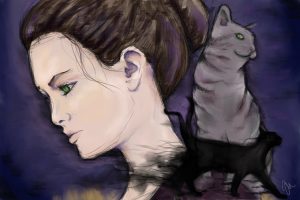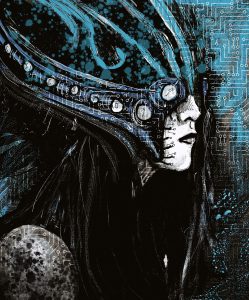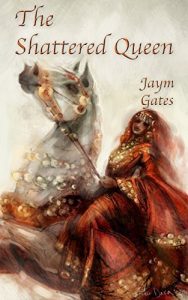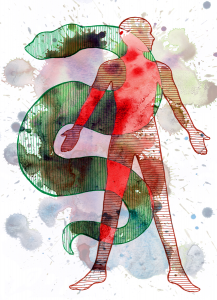An essay by Johnny Trollson, as provided by Sarina Dorie
Art by Errow Collins
Lab Partners: Johnny Trollson, Trog Pixiestomper, and Glurp Swampbottom, Grade 5
Biology Class: Tooth Fairy Experiments
Purpose:
To determine if a tooth fairy survives after her wings are torn off.
Research:
Because tooth fairies store magic in their wings, tearing them off will render them helpless and turn them mortal. Mortals are susceptible to death. According to the textbook, wing removal is painful and kills some species of immortals. Others survive for brief amounts of time, lasting no longer than a hundred years. That is, if a troll doesn’t intervene first.
Hypothesis:
The tooth fairy will die a slow and painful death if her wings are removed. We will take joy in her suffering. At least, my lab partners will.
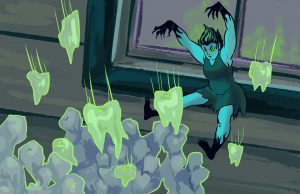
Trog and Glurp don’t want to ever see another tooth fairy for the rest of their lives. But that may also have had to do with the avalanche of teeth that came crashing down on top of them.
To read the rest of this story, check out the Mad Scientist Journal: Spring 2017 collection.
Johnny Trollson is a fifth-grade student at Snorgwog’s School for Trolls. After being kidnapped from his family by a wicked “fairy godmother,” he has finally been returned to his rightful family, where he spends his leisure time playing Kick the Head off the Leprechaun and eating humans. At least, that’s what his parents tell the neighbors.
Sarina Dorie has sold over 100 short stories to markets like Daily Science Fiction, Magazine of Fantasy and Science Fiction, Orson Scott Card’s IGMS, Cosmos, and Sword and Laser. Her stories and published novels have won humor and Romance Writer of America awards. Her steampunk romance series, The Memory Thief, and her collections, Fairies, Robots and Unicorns—Oh My! and Ghosts, Werewolves and Zombies—Oh My! are available on Amazon.
By day, Sarina is a public school art teacher, artist, belly dance performer and instructor, copy editor, fashion designer, event organizer, and probably a few other things. By night, she writes. As you might imagine, this leaves little time for sleep.
You can find info about her short stories and novels on her website: www.sarinadorie.com
Errow is a comic artist and illustrator with a predilection towards the surreal and the familiar. She pays her time to developing worlds not quite like our own with her artist fiancee and pushing the queer agenda. She probably left a candle burning somewhere. More of her work can be found at errowcollins.wix.com/portfolio.
“Mrs. Hobgobble’s Grade 5 Troll Homework: Tooth Fairy Experiments” is © 2017 Sarina Dorie
Art accompanying story is © 2017 Errow Collins

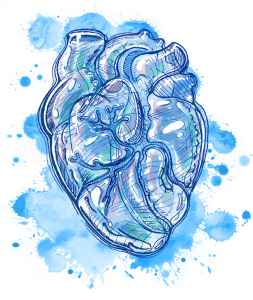
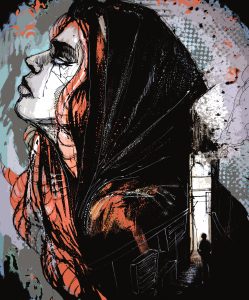
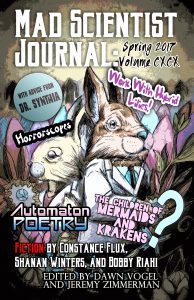 Wing removal from tooth fairies, discoveries of insect history, and Romantic poetry written by automatons. These are but some of the strange tales to be found in this book.
Wing removal from tooth fairies, discoveries of insect history, and Romantic poetry written by automatons. These are but some of the strange tales to be found in this book.